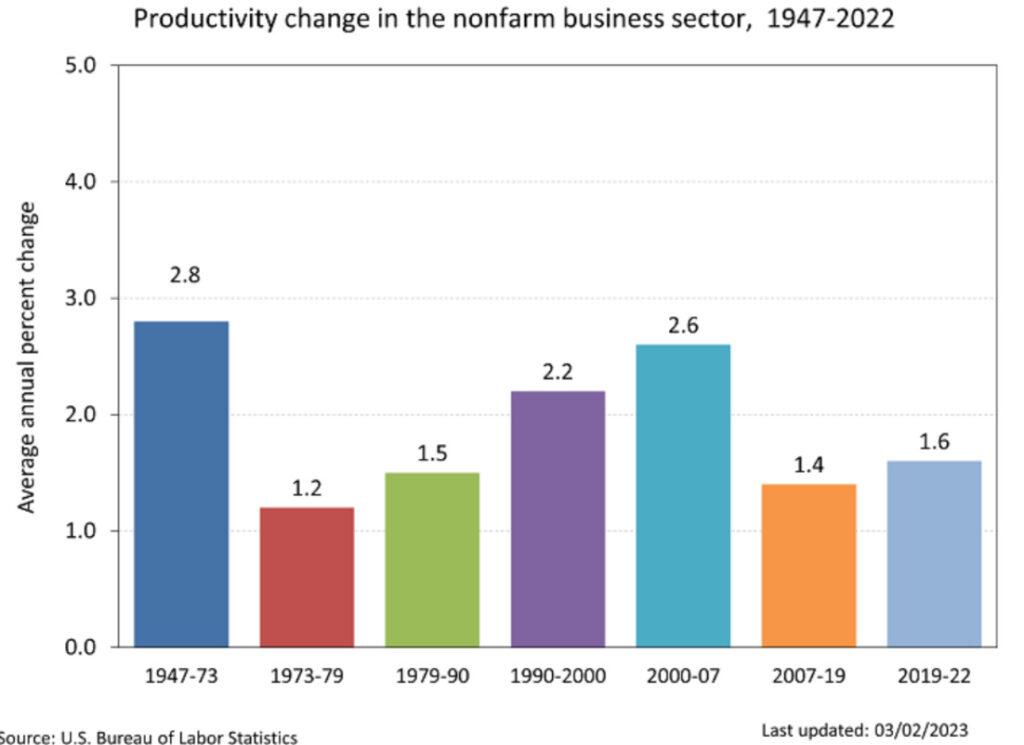How to Establish the Most Productive Workforce Possible
Workforce productivity has fluctuated over time, but it’s increased by one to two percentage points a year since the 1940s when such information was first compiled. Advances in technology, improvements in management practices, and increases in education and skill levels among workers have fueled these productivity increases and helped workforces produce more than ever.
Read more: How to Establish the Most Productive Workforce Possible
To help things along, employers can take certain steps to increase productivity in their workplaces. Here are some ways to maximize the productivity of your workplace so workers accomplish more for you.
Train and Equip Employees
The most important thing you can do to bolster employees’ productivity is to ensure they have enough training and equipment to do their jobs well. Several studies have shown a strong correlation between training and performance, which seems basic, but with 59% of employees saying they received no formal training before starting a job, training and equipping seem like good places to start.
If your company provides training and equipment to new employees, evaluations should be part of the process so you can measure the effectiveness of your preparations. Employees are the ones best able to tell you what kind of additional training they need for success so you can be sure you aren’t losing productivity due to these areas lacking.
Create a Positive Work Environment
Are employees working in conditions that are clean, attractive, and updated? The physical environment can influence productivity, but that’s only part of a positive environment. Messages that employees are respected and valued are more important than physical environments.
An atmosphere of support and encouragement can go a long way towards improving productivity. When employees sense their leaders care about them, they’re motivated to do their best in return.

Focus on Employees’ Well-Being
Workplace or personal stress can impact the productivity of even the most skilled employees, so it benefits an employer to take notice of stress in employees and have resources in place to help them deal with it.
Part of this focus needs to be on communication between management and employees so everyone feels comfortable sharing their needs. Employees will feel comfortable sharing when they’re confident they’ll be understood rather than penalized.
Set Goals and Expectations
Productivity goals may not be top of mind when an employee first looks to get a job with your company, but they’re important if you’re trying to set expectations, hire staff, or give employees parameters for how their productivity should look. Goals need to be realistic, but they should also encourage productivity growth.
Setting expectations too high will only set employees up for failure. However, setting them too low will lead to mediocrity and boredom.
Consider Remote Work or a Hybrid Schedule
Remote work doesn’t increase productivity for every employee, but most find they’re more productive when they don’t have to get up early, dress professionally, or commute to the office every day. A remote or hybrid schedule can work for many firms, but it should be measured to ensure productivity goals are met.
Knowing remote work will be monitored to ensure productivity will help keep employees on the straight and narrow if that’s an issue for them. If managers are aware conditions at home are not conducive to remote work (i.e., there are young children around), they can suggest or require that employees work in the offices.
Gamify Productivity
Gamification makes goals and work fun for most people. They enjoy friendly competition to see how much work can be completed to a standard of quality and accuracy. There are many software tools to help with gamification either by measuring sales, quality assurance, or project completion rates.
Avoid Micromanaging
It can be tempting for managers to have too much influence over how employees complete their work, but most employees hate being micromanaged and will balk at doing their best jobs at work when they see such influence present.
Micromanaging really isn’t necessary when good training and resources are provided. If an employee isn’t doing a job and invites micromanagement, it’s better to resist and to deal with the issues through meetings or a performance review that provides specific feedback.
Appreciate and Reward
A study by O.C. Tanner showed only 61% of employees feel appreciated, while only 32% felt that recognition of a job well done is sincere. Most workplaces don’t express enough appreciation or reward employees enough to maximize productivity, so that’s one area to work on that can yield results.
According to a recent BHN study, employees were twice as likely to prefer prepaid and gift cards to cash bonuses, their second choice. These were followed by extra vacation time, retail gift cards, and brand-name products.
Do you need help to hire staff or fill difficult positions? GDH can help with all your recruiting needs.








